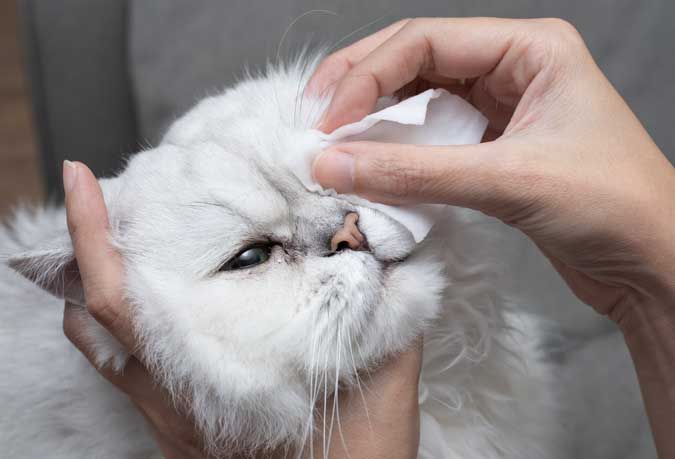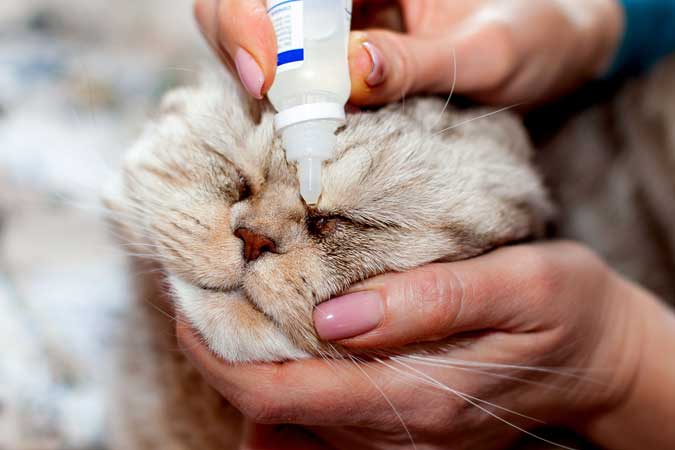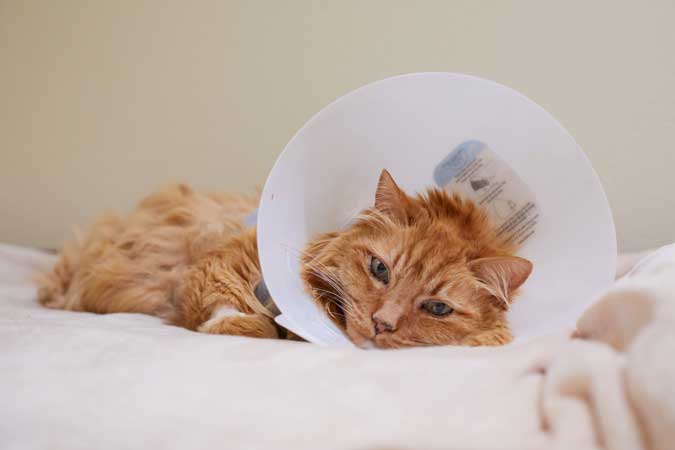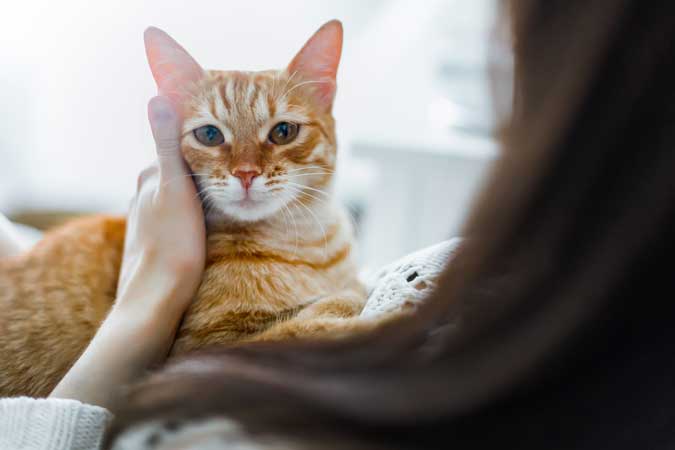Common Cat Eye Infections

A healthy cat's eyes are supposed to be bright and clear. So, if your cat's eyes have started to look more pink, foggy, or you have noticed your cat excessively pawing at them, these may be signs that your cat may have an eye infection. Let's talk about some of the common types of cat eye infections, how to spot them, and the appropriate treatment.
CONJUNCTIVITIS:

Conjunctivitis is the most common reason for feline eye disorders. Conjunctivitis is the inflammation of the thin membrane on the outer surface of the eye that covers the eyeball and lines the eyelids. When it is irritated, it can lead to one eye or both eyes becoming red and swollen. Symptoms include red eyes, frequent rubbing of the eyes, sneezing and coughing, eye discharge, or your cat wanting to keep their eyes closed. In most cases, the infection will self-resolve with no medication at all.
GLAUCOMA

Feline Glaucoma is an eye disease characterized by high eye pressure. When the healthy eye fluid that moves in and out of the lens of the eye is unable to drain normally, the accumulation of the fluid causes the eyeball to harden, which in turn leads to extreme pain and potentially blindness. According to Thomas Kern, Associate Professor of Ophthalmology at Cornell University, the disease is irreversible. While some of the pain and clinical signs may be relieved by using eyedrops, surgery to remove the eye is usually the most appropriate treatment option.
CATARACTS

The lens in a cat's eye is a structure that adjusts the shape as needed in order to focus light rays on the retina, a light sensitive layer of cells at the back of the eye. The retina then receives the light impulses and passes them to the brain as visual information. When the normally clear lens becomes cloudy, incoming light is prevented from getting to the retina and eventually leads to vision problems. While in some cases it won't lead to serious vision problems, in most cases, it usually leads to total blindness. This condition can be caused by a wide range of factors, From a cat's inability to metabolize proteins, conditions such as diabetes and sometimes, it can just be the byproduct of the aging process. The ideal treatment for cataracts is surgery. Fortunately, cataracts are not painful to our feline friends and cats are usually great at adjusting to blindness.
CORNEAL DISEASE

The cornea acts as a barrier against dirt and other harmful bacteria that can harm the eyes. It also acts as a window that focuses and controls the entry of light into the eye. While the cornea is able to quickly repair itself after injuries, a deeper injury can lead to total blindness. Symptoms include redness, corneal scarring, extreme sensitivity to light, etc. Corneal disease is not curable but appropriate treatment can achieve total control of the disorder.
PET INSURANCE

With surgery costs for these infections ranging from as little as $100 to as much as $4,000, the question that most of us have in mind is "how would I be able to afford my cat's treatment?"
One option to consider to help relieve some of the cost is pet insurance. The sentiment about pet insurance varies from person to person. While some folks will tell you that pet insurance is a waste of money, others will tell you how crucial it has been to helping them save the lives of their pets. Fortunately, pet insurance does not have to be expensive. With some cat rates being as low as $10 a month, you are essentially able to insure your pet for the price of a Netflix subscription.
CONCLUSION
There are many types of infections that can affect your cats eyesight, and they all have very similar symptoms. While same may not be as serious as others, it is always recommended to take a visit to the vet to rule out the more dangerous infections. Unfortunately, cats are very good at hiding pain and discomfort and make it hard to know if they are in pain. This makes it even more critical to constantly check for symptoms because some of the failing vision problems may be irreversible by the time they get veterinary help. As in all health problems, the earlier it is diagnosed, the better it may be treated.
Sources:
- https://www.vet.cornell.edu/departments-centers-and-institutes/cornell-feline-health-center/health-information/feline-health-topics/feline-vision-problems-host-possible-causes
- https://www.vet.cornell.edu/departments-centers-and-institutes/cornell-feline-health-center/health-information/feline-health-topics/feline-cataracts
- https://vcahospitals.com/know-your-pet/glaucoma-in-cats
- https://vcahospitals.com/know-your-pet/cataracts-in-cats
- https://www.valuepenguin.com/pet-insurance/average-cost-of-pet-insurance
Previous article

Next article

Related posts
View all-

Holiday Gifts for Every Pet Personality: The Ultimate Guide
The holiday season is finally here, and for many of us, that means finding the perfect presents for the ones we love most—our pets. Whether they are a steadfast dog who never leaves your side or an independent cat who graces you with their presence on their own terms, our pets are cherished members of the family. They deserve to celebrate right alongside us, stocking stuffers and all.
Read Article -

How to Keep Your Pet Calm During Thanksgiving
Thanksgiving is a time for family, friends, and food, but for our pets, the holiday can be overwhelming. The sudden change in routine, unfamiliar faces and scents, and increased noise can trigger significant stress. Understanding why your pet might feel anxious is the first step toward creating a peaceful holiday experience for everyone, including your furry family members. This guide offers calming tips for pets and practical solutions to ensure your dog or cat feels safe and secure during the festivities.
Read Article -

Top Travel Essentials for Pets This Holiday Season
Holiday travel often means bringing the whole family along, and for many of us, that includes our furry companions. Preparing for holiday pet travel is about more than just packing a bag; it's about ensuring your pet's safety, comfort, and happiness from the moment you leave home until you return. A little planning helps reduce stress for both you and your pet, making the journey a positive experience for everyone involved.
Read Article



